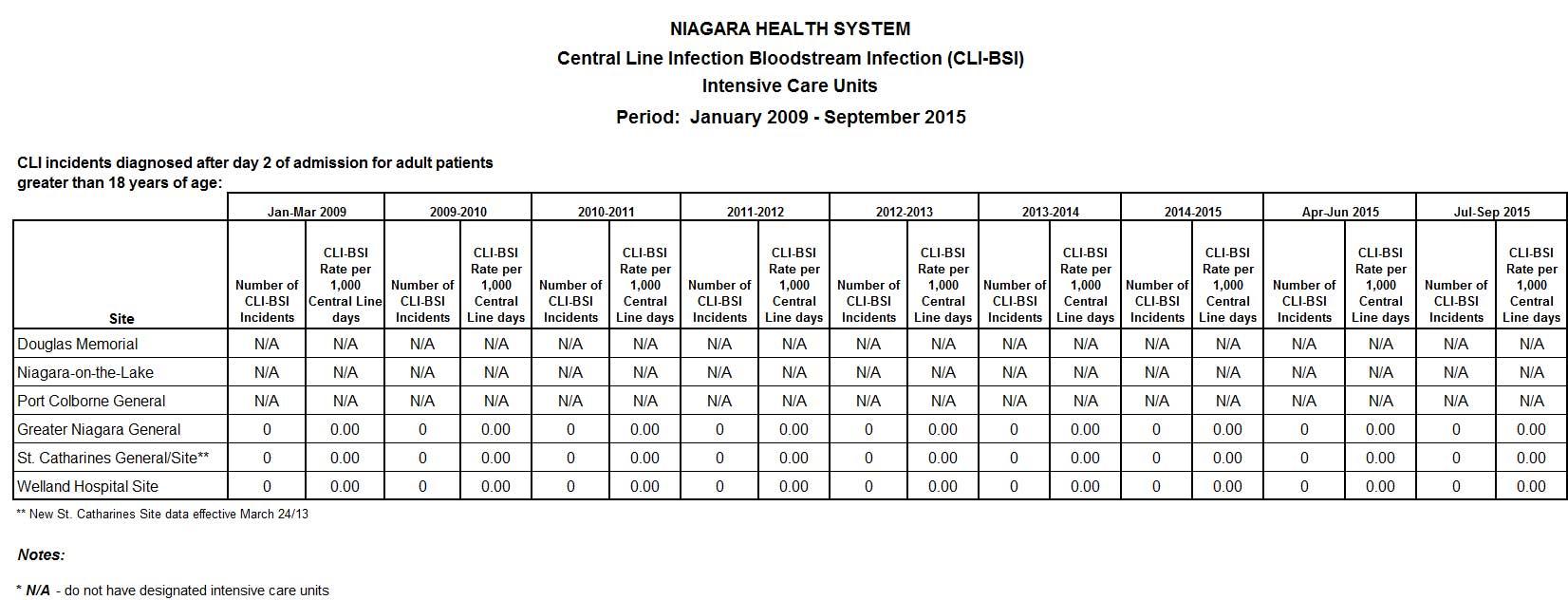Central Line Infection Indicator
Share This Page
Share This Page
Patients in Intensive Care Units often require long-term access to medication or fluids through an IV, therefore, a central line is put in place, usually in the upper chest.
Click on the links below to learn more about our Quality & Safety Indicators.
A Central Line Blood Stream Infection (CLI-BSI) can occur when bacteria and/or fungi enters the blood stream, causing a patient to become sick. The bacteria can come from a variety of places (e.g., skin, wounds, environment, etc.), though it most often comes from the patient’s skin. Hospitals follow best practices on how to prevent bacteria from entering into a central line.
CLI incidents diagnosed after day two of admission for adult patients older than 18 years of age.

All hospitals with ICUs are required to report into the Critical Care Information System (CCIS), a centralized data collection system where hospitals report a variety of critical care information, must publicly report the CLI indicator data.
These Ontario hospitals are posting their quarterly CLI rate and case count for those infections acquired in their facility, using the following formula:
